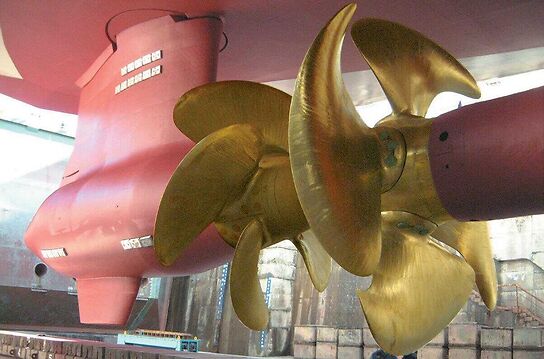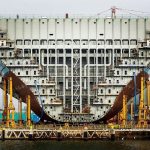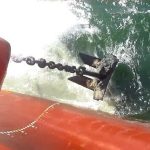While designing a ship, the amount of resistance produced and the design of ship lines are the two important factors that should be taken into consideration. Both these factors depend considerably on the type and number of propellers used. Higher propeller efficiency attained within the desirable cost and least usage of machine power is the ultimate goal of any ship designer. The choice of a propeller mainly depends on the type and draft of the ship.
Factors affecting the choice
If the speed and power required by the ship is more and also the allowable draft is high, it is imperative to use twin propellers with the diameter that can be easily accommodated within the draft.
Twin or multiple screw type propellers are generally used where the degree of reliability required is more or in case of a break down, the cost expected for the mobility of the vehicle for repairs will be extremely high, e.g. cruise lines. Multiple screw propellers are also generally used in the vehicles where the risk of accident is high or where there are high chances of a part or machinery of ship to get damaged, e.g. war and ice breaker ships.
Multiple screw propellers are also used where the requirement of better and smooth maneuverability is high. A slow speed maneuvering can be controlled by bow thrusters or high performance rudder, but a high speed maneuvering needs multiple screw propellers.
Controllable pitch propeller
This type of propeller is used in spite of its low efficiency due to the smooth and easy maneuverability it provides, especially when the ship has to often move in the confined waters. This propeller is also used when the ship has to continuously operate at one speed or for fuel efficiency reasons where the ship has to move of different speeds and displacement. This propeller is often used in war ships where the cruising speed is half the full speed. A controllable pitch propeller prevents the over-torquing of the cruise propeller that might be caused by fixed pitch propeller.
An alternative to two pitch propeller will be a two speed gear box.

Highly skewed propeller
A highly skewed propeller can be a fixed pitch propeller or a controllable propeller. Skewing contributes negligibly to increase the efficiency of the propeller but plays an important role in reducing the propeller forces on the hull. This type of propeller is mainly fitted on cruise ships or passenger ships where the avoidance of vibration is of utmost importance.


Self Pitching propellers
These types of propellers are generally used for low power vessels. They are highly found in yachts or smaller vessels, as there are higher chances of facing mechanical errors when they are used in heavy and high powered vessels. An interesting point is that the open water efficiency obtained at astern is same as that at ahead.
Other propeller types
There has been a massive advancement in the innovation and development of the propellers for increasing efficiency. Some of
the newly developed propellers are tip vortex free(TVF) and balanced thrust loading(BTL) propellers. They are not so extensively used as they do not provide the kind of efficiency that they promise.
One more type of propeller is contra-rotating propeller which reduces the rotational losses and thus increases the efficiency. This type of propeller is generally used in a direct electric drive propeller where the usage of gear box can be avoided. They are generally fitted on smaller ships. This type of propellers if used in bigger ships gets confronted with problems such as high mechanical complexity, high cost of gear box and shafting and propeller limits. Thus they are used in smaller ships with less power and higher steering performance requirement.



